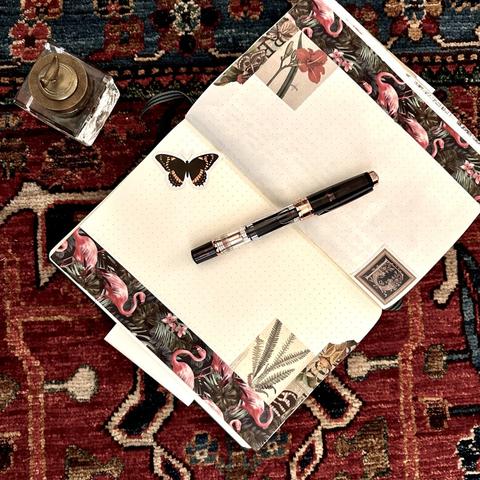Recent searches
Search options
#journalingcommunity
1 post1 participant0 posts today
In 1974 Juan Perón died and power transferred to his third wife and widow, Maria Estela Martínez de Perón.
The Montenero’s (the left-wing revolutionary group who voted for Perón) went underground. They declared their opposition to the government.
On November 6th, 1974, a state of siege was declared and 3000 suspected “subversives” were placed in preventive detention.
Meanwhile, to the north in Tucumán, the ERP (People’s Revolutionary Army), an anti-Peronist revolutionary group, tried to set up a stronghold.
Notably, Tucumán has a lot of symbolic significance because it’s where Argentine independence was signed in 1816.
In response, the military set up secret detention centers, used torture, and were found to have “deliberately used terror to intimidate the entire local population.”
Tucumán became the testing ground for the tactics that would come to define the military juntas of the Dirty War, where secret detention centers were set up across the entire country to systematically disappear, torture, and ultimatelyy murder estimated tens of thousands of Argentine citizens.
It all began under a civilian government. 1974-1975 was a turbulent time: “An Argentine newspaper reported that during this period there was a politically motivated killing every five hours, and a bomb explosion every three.”
According to Nick Caistor, Argentines were likely relieved, not knowing what would come next, under the rule of Lt General Jorge Rafael Videla. The coup took place on the night of 23/24 March 1976.
#fountainpen #journalingcommunity #journalflatlay #journalspread #stationerylover #notebook
QOTD: Are you interested in Latin American history?
The Montenero’s (the left-wing revolutionary group who voted for Perón) went underground. They declared their opposition to the government.
On November 6th, 1974, a state of siege was declared and 3000 suspected “subversives” were placed in preventive detention.
Meanwhile, to the north in Tucumán, the ERP (People’s Revolutionary Army), an anti-Peronist revolutionary group, tried to set up a stronghold.
Notably, Tucumán has a lot of symbolic significance because it’s where Argentine independence was signed in 1816.
In response, the military set up secret detention centers, used torture, and were found to have “deliberately used terror to intimidate the entire local population.”
Tucumán became the testing ground for the tactics that would come to define the military juntas of the Dirty War, where secret detention centers were set up across the entire country to systematically disappear, torture, and ultimatelyy murder estimated tens of thousands of Argentine citizens.
It all began under a civilian government. 1974-1975 was a turbulent time: “An Argentine newspaper reported that during this period there was a politically motivated killing every five hours, and a bomb explosion every three.”
According to Nick Caistor, Argentines were likely relieved, not knowing what would come next, under the rule of Lt General Jorge Rafael Videla. The coup took place on the night of 23/24 March 1976.
#fountainpen #journalingcommunity #journalflatlay #journalspread #stationerylover #notebook
QOTD: Are you interested in Latin American history?
Nunca Más, CONADEP’s (The National Commission on Disappeared People) report of their findings from their project to document what happened to the disappeared in Argentina from 1976 to 1983, begins with a historical contextualization of how the military junta came to power, by Nick Caistor from the Index on Censorship.
Like any historian of the Dirty War, Caistor begins with the return from exile of Juan Domingo Perón, who returned to Argentina on the 20th of June 1973. His party had just won the election with 62% of the vote, and Hector Cámpara, who had run, stepped aside for Perón to return as president.
From the start there were problems. Peronists gathered at the airport to welcome Perón back to Argentina, but there were two factions that had won Perón the election (both considered themselves Peronists), and they were not ideologically aligned.
On one side were the Montenegro’s, a left-wing revolutionary group. On the other side were the right wing labor bosses. Fighting broke out at the airport, and what seemed to be a celebratory moment ended with 25 dead and many more wounded.
It’s a sadly befitting beginning for the era that would follow.
QOTD: What are you currently studying?
#fountainpen #fountainpencommunity #study #studygram #leuchtturm1917 #notes #notebook #handwriting #journalingcommunity
Like any historian of the Dirty War, Caistor begins with the return from exile of Juan Domingo Perón, who returned to Argentina on the 20th of June 1973. His party had just won the election with 62% of the vote, and Hector Cámpara, who had run, stepped aside for Perón to return as president.
From the start there were problems. Peronists gathered at the airport to welcome Perón back to Argentina, but there were two factions that had won Perón the election (both considered themselves Peronists), and they were not ideologically aligned.
On one side were the Montenegro’s, a left-wing revolutionary group. On the other side were the right wing labor bosses. Fighting broke out at the airport, and what seemed to be a celebratory moment ended with 25 dead and many more wounded.
It’s a sadly befitting beginning for the era that would follow.
QOTD: What are you currently studying?
#fountainpen #fountainpencommunity #study #studygram #leuchtturm1917 #notes #notebook #handwriting #journalingcommunity
Remember that every day is the best day of the year!
#inspiring #journaling #journal #vintage #aesthetic #selflove #bulletjournal #selfcare #journalinspiration #stationery #planner #artjournal #scrapbooking #stickers #plannercommunity #junkjournal #planneraddict #journalspread #art #journalcommunity #bujoinspiration #bulletjournaling #creativejournaling #washitape #journalingcommunity #journalideas #notebook #stationeryaddict #artjournaling #scrapbook #bujocommunity #journaladdict #creativejournal
#inspiring #journaling #journal #vintage #aesthetic #selflove #bulletjournal #selfcare #journalinspiration #stationery #planner #artjournal #scrapbooking #stickers #plannercommunity #junkjournal #planneraddict #journalspread #art #journalcommunity #bujoinspiration #bulletjournaling #creativejournaling #washitape #journalingcommunity #journalideas #notebook #stationeryaddict #artjournaling #scrapbook #bujocommunity #journaladdict #creativejournal
What is disappearance? In short, it is a repressive tactic used by authoritarian states to terrorize the civilian population into submission.
While the term “the disappeared” emerges in the aftermath of authoritarianism in Guatemala (1966) and Operation Condor in South America (perhaps most famously General Pinochet and his reign of terror in Chilean, but also juntas across South America including in Argentina), it describes a tactic that has long been in use and continues to be used by authoritarian regimes across the world, so it’s a concept to be aware of and understand.
Disappearance is characterized by illegal abduction, secret detention centers, torture, death, and unofficial burial.
Disappearance was, in theory, a way to avoid responsibility. The state maintained plausible deniability while effectively terrorizing their citizens into submission. The message is clear, you could be next.
QOTD: Have you heard of disappearing?
#studygram #notestagram #studygrammer #studying #academicaesthetic #academiaesthetic #researchlife #fountainpenink #postdoclife #theleveragedphd #fountainpen #journalaesthetic #fountainpenlover #darkacademia #studyspace #studytips #studyaesthetic #studyspo #studylife #studymotivation #rockyourhandwriting #journalaesthetic #studywithme #notespread #journaling #journalingcommunity #cozystudying #cozyaesthetic #leuchtturm1917
While the term “the disappeared” emerges in the aftermath of authoritarianism in Guatemala (1966) and Operation Condor in South America (perhaps most famously General Pinochet and his reign of terror in Chilean, but also juntas across South America including in Argentina), it describes a tactic that has long been in use and continues to be used by authoritarian regimes across the world, so it’s a concept to be aware of and understand.
Disappearance is characterized by illegal abduction, secret detention centers, torture, death, and unofficial burial.
Disappearance was, in theory, a way to avoid responsibility. The state maintained plausible deniability while effectively terrorizing their citizens into submission. The message is clear, you could be next.
QOTD: Have you heard of disappearing?
#studygram #notestagram #studygrammer #studying #academicaesthetic #academiaesthetic #researchlife #fountainpenink #postdoclife #theleveragedphd #fountainpen #journalaesthetic #fountainpenlover #darkacademia #studyspace #studytips #studyaesthetic #studyspo #studylife #studymotivation #rockyourhandwriting #journalaesthetic #studywithme #notespread #journaling #journalingcommunity #cozystudying #cozyaesthetic #leuchtturm1917
Love with all your heart 
#journaling #journal #bulletjournal #bujo #journalinspiration #stationery #planner #artjournal #scrapbooking #stickers #plannercommunity #junkjournal #planneraddict #journalspread #art #journalcommunity #bujoinspiration #bulletjournaling #creativejournaling #washitape #journalingcommunity #journalideas #notebook #stationeryaddict #artjournaling #scrapbook #journaladdict #creativejournal
#journaling #journal #bulletjournal #bujo #journalinspiration #stationery #planner #artjournal #scrapbooking #stickers #plannercommunity #junkjournal #planneraddict #journalspread #art #journalcommunity #bujoinspiration #bulletjournaling #creativejournaling #washitape #journalingcommunity #journalideas #notebook #stationeryaddict #artjournaling #scrapbook #journaladdict #creativejournal
Something about me? I love fountain pens. I write exclusively with them (except when I need to sign something because only fun inks not permanent black ink for me).
Something I loved doing on Instagram has been participating in the fountain pen and journaling communities there.
I learned so much of what I know about fountain pens through social media, including about Hobinichi (the planner brand pictured here) and bungubox (the pen brand pictured here).
I learned about so many fountain pen inks that come in all of these incredible shades, and sheens from small brands across the world.
I loved seeing all the creative ways people used their pens and inks from currently inked logs to the final touches on their junk journal spreads.
It’s also really fun to see everyone’s different handwriting, their aesthetic sensibilities, and how those things brought their journals to life. So I hope that’s somrthing I’ll find here as well.
If you’re a fountain pen user or aspiring fountain pen user, let’s connect!
QOTD: what is your go to fountain pen?
#fountainpen #fountainpens #newfountainpen #bungubox #bunguboxpen #hobinichi #hobinichitecho #hobinichilife #hobinichiplanner #stationerylover #fountainpenlover #fountainpenfanatic #learnwithme #studywithme #darkacademia #academia #academiaaesthetic #academicaesthetic #darkacademiaaesthetic #grayacademia #cozyvibes #cozystudying #cozyjournaling #journalingcommunity #stationerycommunity
Something I loved doing on Instagram has been participating in the fountain pen and journaling communities there.
I learned so much of what I know about fountain pens through social media, including about Hobinichi (the planner brand pictured here) and bungubox (the pen brand pictured here).
I learned about so many fountain pen inks that come in all of these incredible shades, and sheens from small brands across the world.
I loved seeing all the creative ways people used their pens and inks from currently inked logs to the final touches on their junk journal spreads.
It’s also really fun to see everyone’s different handwriting, their aesthetic sensibilities, and how those things brought their journals to life. So I hope that’s somrthing I’ll find here as well.
If you’re a fountain pen user or aspiring fountain pen user, let’s connect!
QOTD: what is your go to fountain pen?
#fountainpen #fountainpens #newfountainpen #bungubox #bunguboxpen #hobinichi #hobinichitecho #hobinichilife #hobinichiplanner #stationerylover #fountainpenlover #fountainpenfanatic #learnwithme #studywithme #darkacademia #academia #academiaaesthetic #academicaesthetic #darkacademiaaesthetic #grayacademia #cozyvibes #cozystudying #cozyjournaling #journalingcommunity #stationerycommunity





